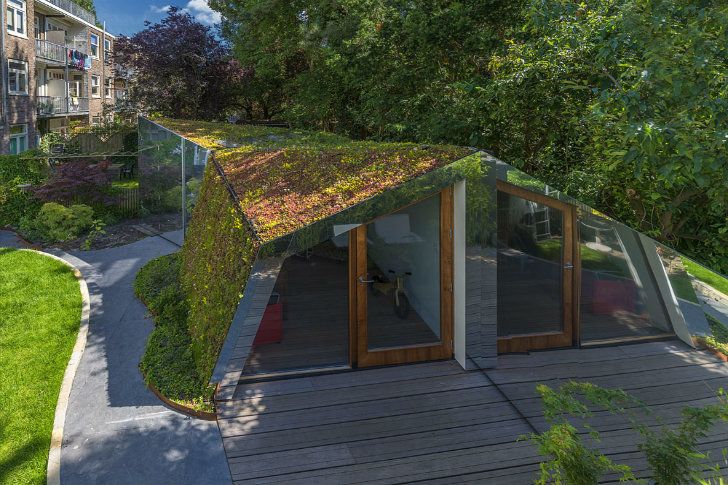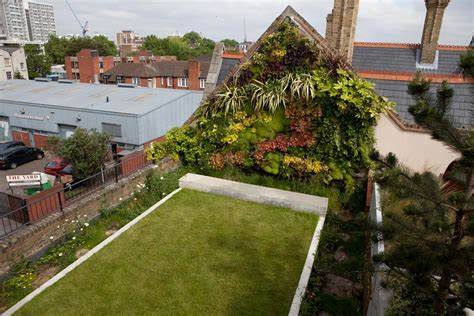
Vertical Gardens and Green Roof Synergy: Enhancing Urban Environments
Introduction
In today’s rapidly urbanizing world, the integration of nature into our cities has become more important than ever. The concept of Vertical Gardens and Green Roofs, also known as living walls and green facades, has emerged as an innovative solution to bring nature back into our concrete jungles. This article explores the definition, benefits, design considerations, case studies, current trends, challenges, and future outlook of Vertical Gardens and Green Roof Synergy.
Historical Background
The roots of Vertical Gardens and Green Roofs can be traced back to ancient civilizations such as the Hanging Gardens of Babylon. However, it was not until the late 20th century that the concept gained significant traction. Today, as urbanization continues to rise, the adoption of Vertical Gardens and Green Roofs has become more prevalent as a response to the challenges posed by urban environments.
Key Concepts and Definitions
Vertical Gardens encompass a wide range of living walls and green facades, which can be integrated into buildings and structures. On the other hand, Green Roofs refer to rooftop landscapes that are covered with vegetation. The synergy between these two concepts lies in their combined ability to enhance environmental benefits, such as improving air quality, reducing urban heat island effect, and providing insulation properties.

Main Discussion Points
Benefits and Design Considerations of Vertical Gardens and Green Roofs
Benefits of Vertical Gardens and Green Roof Synergy
Vertical Gardens and Green Roofs offer a multitude of benefits. Firstly, they contribute to improved air quality and help combat the negative effects of urban pollution. Additionally, these green installations enhance biodiversity and provide ecosystem services, such as pollination and habitat creation. Lastly, Vertical Gardens and Green Roofs exhibit energy-efficient and insulation properties, reducing the energy consumption of buildings.
Design considerations and techniques for Vertical Gardens and Green Roofs
To ensure the success of Vertical Gardens and Green Roofs, careful consideration must be given to plant species selection, irrigation and drainage systems, and the structural integrity of buildings. Choosing suitable plant species that can thrive in vertical or rooftop environments is crucial. Efficient irrigation and drainage systems are also necessary to maintain the health of the vegetation. Furthermore, structural considerations and assessing the load-bearing capacity of buildings are paramount to ensure stability and safety.
Integration with buildings and urban landscapes
Vertical Gardens can serve as architectural features, transforming the aesthetics of buildings and making them more visually appealing. On the other hand, Green Roofs have the potential to play a significant role in urban planning and sustainable development. By integrating these green installations into the urban landscape, cities can create a more harmonious and environmentally friendly environment for both residents and wildlife.
Case Studies or Examples
Showcasing Successful Implementations of Vertical Gardens and Green Roofs
High Line Park, New York City
High Line Park, situated on a historic freight rail line, is a prime example of how Vertical Gardens can transform urban spaces. The park features an elevated linear garden that stretches for 1.45 miles, creating a green oasis amidst the bustling city. It has become a popular attraction and a symbol of innovative urban design.
Bosco Verticale, Milan
Bosco Verticale, or “Vertical Forest,” is a pair of residential towers in Milan that boast over 900 trees and 20,000 plants. This iconic project highlights the potential of Green Roofs to create a vertical forest in an urban setting, improving air quality and providing a sustainable living environment for residents.
One Central Park, Sydney
One Central Park in Sydney is renowned for its vertical gardens and green facades. It combines innovative design, sustainable architecture, and a vast array of plant species to create a vibrant and visually stunning urban landscape. This project has become a benchmark for incorporating greenery into high-rise buildings.
Current Trends or Developments
Advancements and Research in Vertical Gardens and Green Roofs
Advancements in technology and materials for Vertical Gardens and Green Roofs
With advancements in technology and materials, Vertical Gardens and Green Roofs are becoming more accessible and easier to implement. Innovations in irrigation systems, lightweight planting modules, and improved plant selection techniques are revolutionizing the field, making these installations more efficient and sustainable.
Increased adoption and implementation in urban areas
The adoption and implementation of Vertical Gardens and Green Roofs are on the rise in urban areas worldwide. As awareness of their benefits spreads, city planners, architects, and developers are embracing these green solutions to create healthier and more sustainable cities.
Research findings on the environmental and health benefits
Research on Vertical Gardens and Green Roofs has provided substantial evidence of their positive impact on the environment and human health. Studies have shown that these installations improve air quality, reduce stress levels, and enhance overall well-being. These findings further reinforce the importance of incorporating nature into our urban environments.
Challenges or Controversies
Addressing Maintenance, Cost, and Aesthetic Concerns
Maintenance and upkeep requirements
Vertical Gardens and Green Roofs require regular maintenance to ensure their longevity and vitality. Factors such as irrigation, pruning, and pest control must be carefully managed to keep these installations thriving. Proper maintenance practices and education are essential to overcome these challenges.
Cost considerations and economic feasibility
Implementing Vertical Gardens and Green Roofs can involve significant upfront costs. However, studies have shown that the long-term benefits, such as energy savings and increased property value, can outweigh the initial investment. Economic feasibility studies and incentives can play a crucial role in encouraging their wider adoption.
Differing viewpoints on aesthetic impact and architectural integration
The aesthetic impact and architectural integration of Vertical Gardens and Green Roofs are subject to differing viewpoints. While some view them as beautiful additions to the urban landscape, others may have reservations about their visual appeal. Striking a balance between aesthetics and functionality can be a challenge that requires careful planning and design.
Future Outlook
Expanding the Potential of Vertical Gardens and Green Roofs
Potential expansion and integration of Vertical Gardens and Green Roofs
As cities continue to grow and face environmental challenges, the potential for the expansion and integration of Vertical Gardens and Green Roofs is immense. By maximizing the space available in urban areas, we can create more green havens that contribute to a healthier and more sustainable future.
Adoption of policies and incentives to promote their implementation
To accelerate the adoption of Vertical Gardens and Green Roofs, policymakers and governments should consider implementing supportive policies and incentives. Financial incentives, tax breaks, and building codes that encourage the incorporation of green installations can greatly facilitate their implementation.
Innovations and developments in the field
The field of Vertical Gardens and Green Roofs is constantly evolving, with ongoing research and development. Innovations in plant selection, materials, and techniques will continue to drive the growth of this field, making these solutions more efficient, affordable, and beneficial for urban environments.
Conclusion
Vertical Gardens and Green Roofs have emerged as transformative solutions that enhance urban environments by bringing nature back into our cities. We have explored the definition, benefits, design considerations, case studies, current trends, challenges, and future outlook of Vertical Gardens and Green Roof Synergy. It is now more important than ever to prioritize the implementation of these green installations and work towards creating healthier, more sustainable cities.